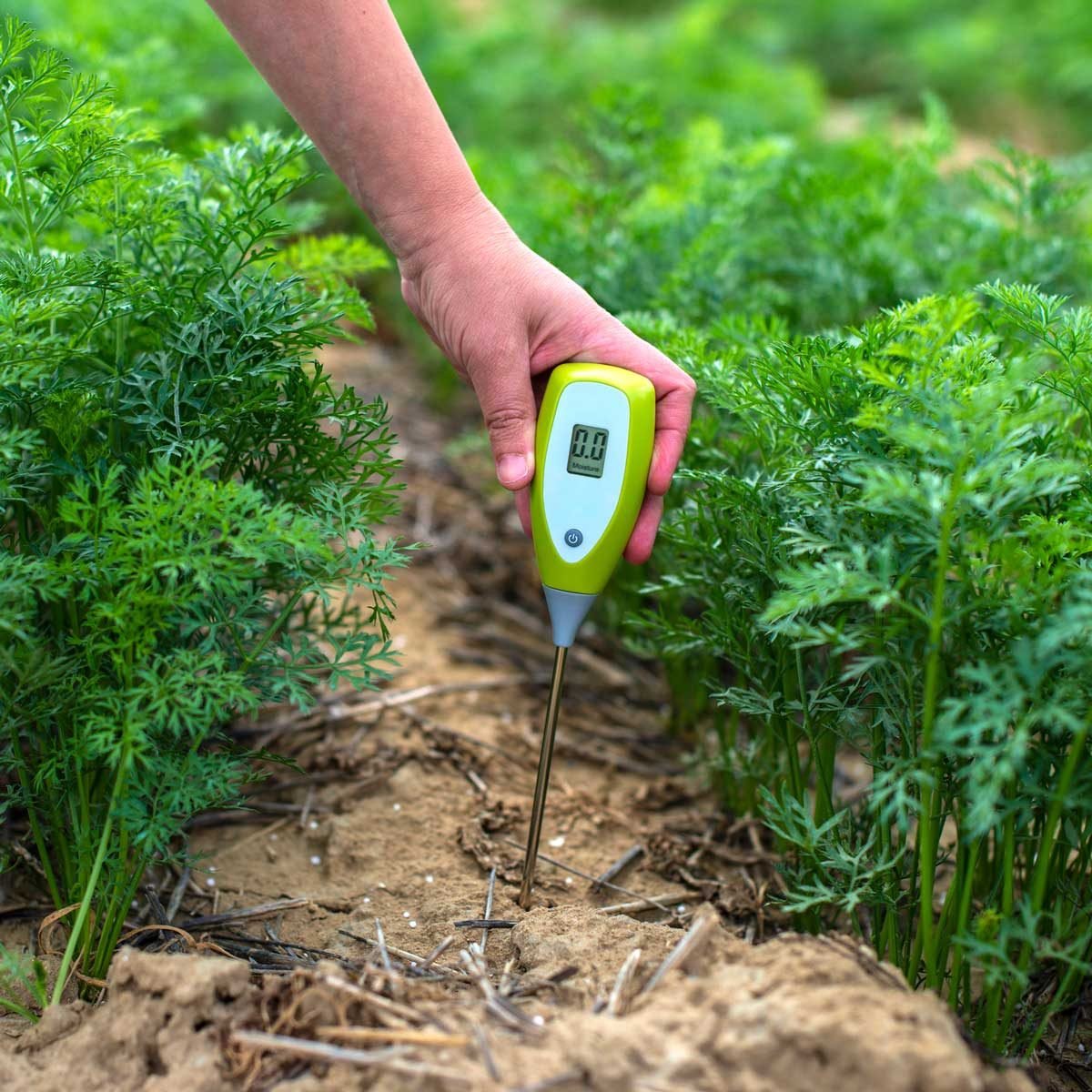Soil is only as good as its pH level. If your soil is too acidic or too alkaline, it will prevent your garden and lawn from thriving.

Tips for Making Your Soil More or Less Acidic

If this is the year you’re planning on a fresh vegetable garden or just greening up the landscape around your home, you’ll need to know the pH level of your soil. Your soil’s pH is an important part of the plant health puzzle. Learning what it is and how to adjust it may determine whether your plants struggle or blossom.
On This Page
What Is Soil pH Level?
The scientific symbol pH refers to the concentration of hydrogen ions. The pH number of your soil indicates the presence or absence of minerals important to healthy plant growth.
A soil test determines the pH level. You can buy soil tests at commercial garden centers and local county agricultural extension offices, or you can order a home test kit.
Your soil’s pH number will be between 0 and 14. Soil is considered acidic if its pH is at or below 5. It’s too alkaline if the results are above pH 7.5.
Many factors influence the pH level of soil, including:
- Frequent rain that leaches out alkaline, making soil more acidic;
- A lack of organic matter contributed by tree cover;
- The presence of acid- or alkaline-contributors such as limestone or granite;
- Fertilizer salts that increase acidity;
- Concrete foundations or walkways that leach alkaline into soil.
The East Coast and Pacific Northwest are acidic due to high annual rainfall, while limestone in the West and Southwest account for alkaline soil. The Midwest generally enjoys balanced pH, unless the soil has been disturbed for a building project and replaced with a poor substitute.
Why Do Soil pH Levels Need Adjusting?
Soil that’s too alkaline or too acidic prevents a plant’s roots from accessing nutrients needed for optimal growth. Proper soil pH means healthier plants and more blossoms or fruit. Loose soil (rather than dense and compacted), water, the right amount of sunlight and organic matter also contribute to productive growth.
Amending the soil, or adding materials to improve it, can help. However, be careful because it’s easy to make a mistake, according to the Horticultural Extension Division of Mississippi State University. The difference between a pH of 5 and a pH of 6 is tenfold, and the difference between pH 5 and pH 7 is 100 points.
How to Lower the pH Level in Soil
When soil is alkaline, it’s difficult to lower it, but acidifying nitrogen, elemental sulfur, iron sulfate or aluminum sulfate are viable options. Soil test results should tell you how much, when and how to apply.
Moderate alkalinity may also be rectified with the addition of sphagnum peat moss. Just add a layer of one to two inches on top of the area of concern and work it into the soil with a rototiller or spade. This peat will also augment beneficial organic matter in the soil.
How to Raise the pH Level in Soil
Adding lime reduces acidity. University of Vermont soil scientists say that the amount of lime needed to “sweeten” or lower acidity depends on the composition of the soil. Sandy soil needs less lime while clay-based soil needs more.
It’s best to apply lime in fall and winter for spring planting, allowing the substance time to impact the pH. To determine the amount of clay or sand in your soil, do a simple percolation test to find out how quickly water is absorbed.




















